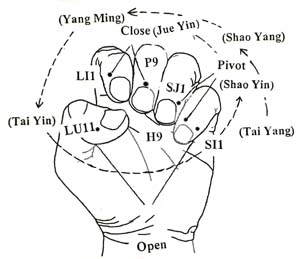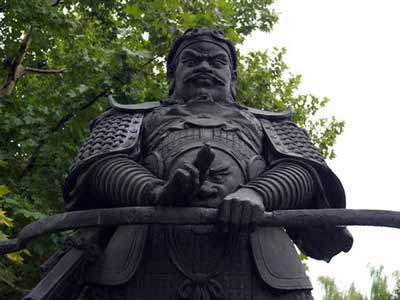Basic Chinese Internal Martial Arts 5-Day TrainingLafayette, CA
Session 1 - JUNE 11th-15th
Session 2 - JUNE 18th-22th
The internal martial arts are famous for the cultivation of qi and effortless power; however, the qi levels
and spirit levels can only develop from a physical base. Without a solid base of practice the higher
levels are in accessible. This class will focus on physical prowess and high-level body mechanics. We
will use spiraling, lengthening, shrinking, and expanding to connect the whole body into a powerful
platform for spontaneous freedom.
Zhanzhuang - The practice of standing meditation also called
yiquan or
wuji. No one ever got good by skipping this step.
Neigong - Internal power stretch and whole-body shrinking and expanding. This is all the soft stuff! It develops the four corners of martial fitness - Unliftable, Unsqueezable, Unmoveable, and Unstoppable.
Jibengong - Basic training for internal martial arts, which includes individual exercises to develop irreversible body art (
shenfa), exquisite structure (
xing), and refined power (
jin).
Taiji, xinyi, or bagua focus, depending on your experience.
Lecture-encounters will include a Daoist text studies introduction and history, along with group exploration of the experimental links between theater and meditation. All instruction will be given in the classical one-to-one naturally disheveled style in order to meet and match each person?s unique experience and insights.
Two Person Practices develop spacial awareness and technical spontaneity while systematically testing every part of our physical and emotional bodies. This includes everything to do with resistance, light contact, throws, rough footwork,
tui shou, and
roshou. How can we discard our social need to dominate or submit, and embody nonaggression without giving up marital prowess?
ScheduleBegin in the parks around Lafayette, CA
6 AM Zhan Zhuang
7 AM Neigong
8 AM Jibengong
*9 AM Breakfast (Optional: rice porridge made from bone stock with pickled foods)
10 AM Two Person Practices Training
12 PM Lunch - bring your own or eat locally. Take a nap, drink tea...
2 PM Lecture/Encounter
4 PM End
*Breakfast will be based on Traditional Chinese Nutritional Theory.
Sleeping There is camping in the area, hotels, youth hostels, and many other options. We will be walking distance from a BART train stop which means you can stay pretty much anywhere in the San Francisco Bay Area.
Cost per session - $350 To reserve your spot send a check made out to:
Scott P. Phillips
953 Dewing Ave., Lafayette, CA 94549
Feel free to email gongfuguy@gmail.com or call 415.200.8201 to discuss details.









![alg_kidneys[1] alg_kidneys[1]](http://s3.media.squarespace.com/production/1425671/17265221/blog1/wp-content/uploads/2011/10/alg_kidneys1-300x223.jpg)


